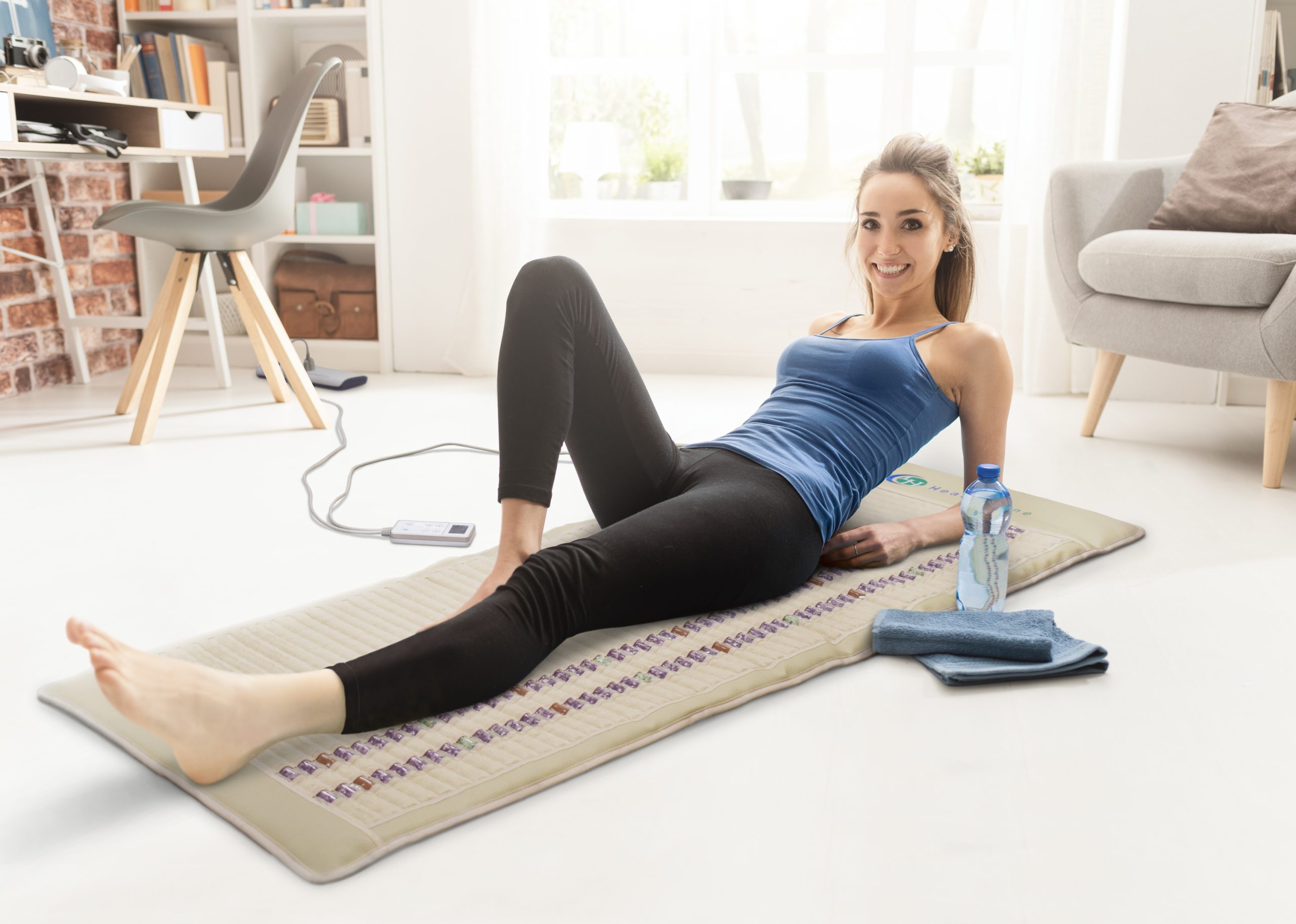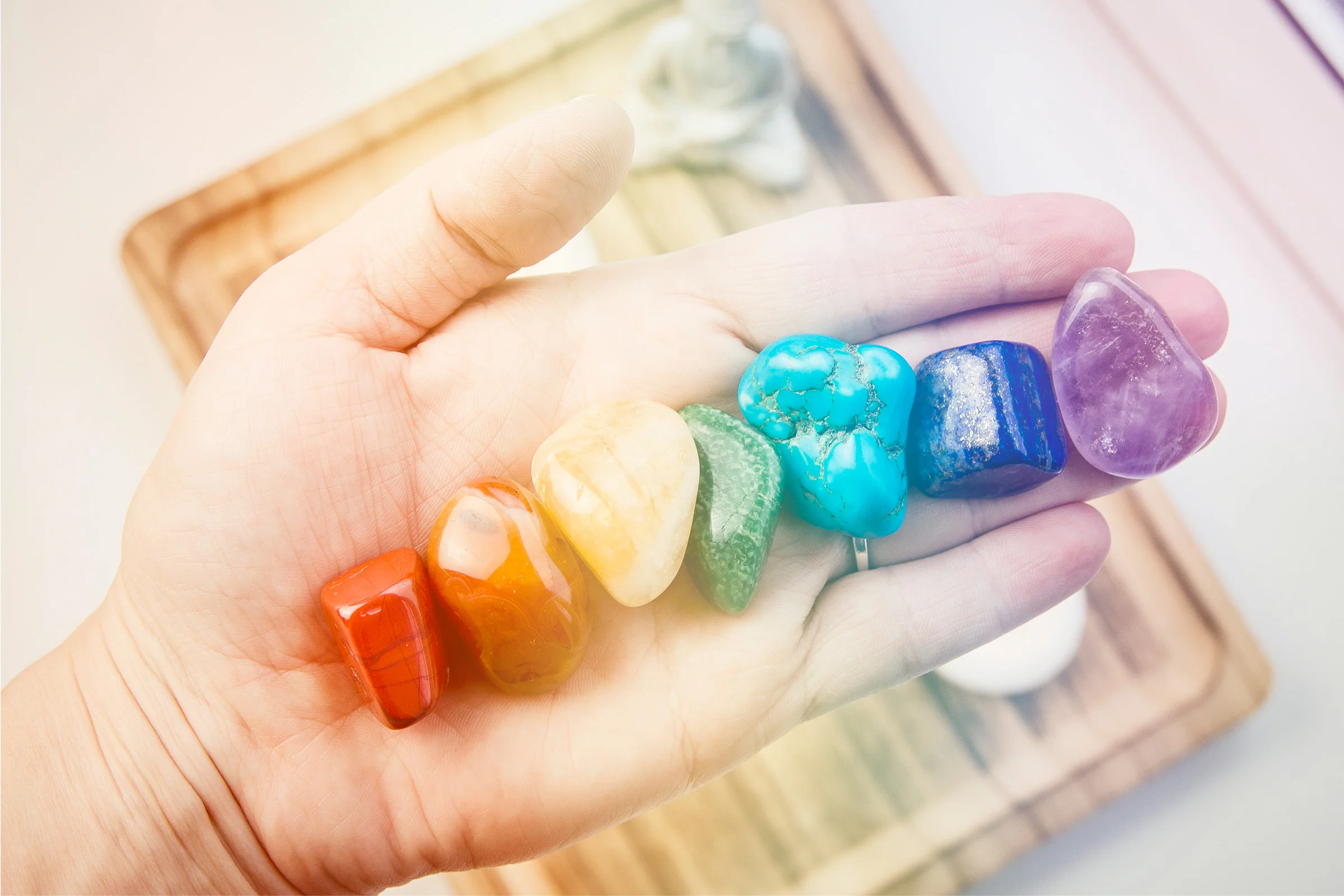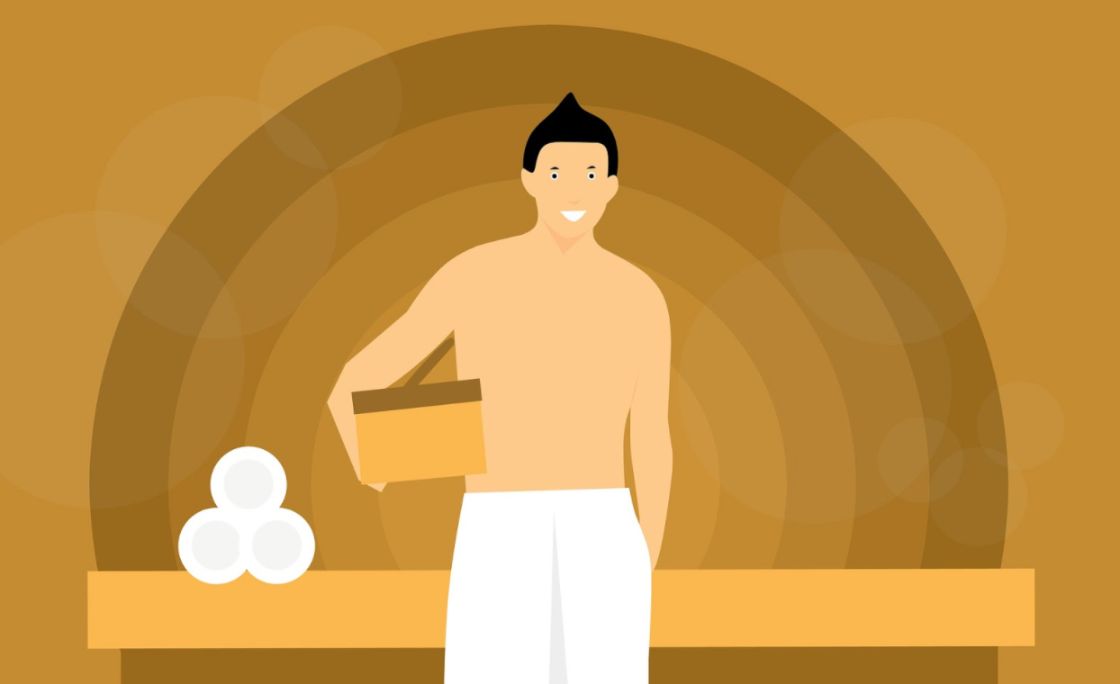You have gone and overdone it again, and now you are waking up with stiff, sore muscles.
If only there was some way to know how to get rid of soreness before it ever gets to this point.
Thankfully, there is a wealth of knowledge and home remedies that can help you do just that.
By understanding the causes of muscle pain, you not only can prevent it from happening, you also can alleviate it quickly and easily, right from the comfort of your own home.
No need to rely on medications — prescription or otherwise.
What are Sore Muscles?
Understanding the causes of muscle pain can help resolve it.
This is especially relevant because different causes of muscle pain oftentimes require different solutions to alleviate that pain.
It is important to note that lactic acid being the cause of muscle aches is actually a myth.
While the buildup of lactic acid may cause acute muscle soreness, it generally flushes out of the muscles no more than an hour after rest and does not cause long-term or delayed muscle pain.
- Micro-Tears
The overwhelming majority of muscle pain caused by exercise and experienced a day or two later is caused by micro-tears.
As the name suggests, micro-tears are slight tears of the muscle fibers that do not generally cause major injuries or require medical assistance.
In fact, it is when your body repairs micro-tears that your muscles become stronger.
However, too many microtears too quickly can lead to incredibly uncomfortable sore and stiff muscles days after working out.
- Cramps
Unlike muscle tears, cramps may or may not necessarily involve sustained injury to the muscle tissues themselves.
In fact, once a cramp has passed, the muscle tissue may be as healthy as it was before the cramp occurred.
However, this often indicates the muscle was not completely healthy in the first place.
Regardless, muscles cramps are denoted by a painful contraction of the muscle.
It can last for seconds or minutes and can either present as a sustained contraction or a rapid series of contractions.
- Sprains and Strains
Technically speaking, a muscle sprain does not occur at the muscle.
A sprain is where a ligament is stretched beyond its limits, sometimes resulting in a tear.
A muscle strain, on the other hand, does occur at the muscle.
However, the causes of a muscle sprain and muscle strain are similar in that a muscle strain also is caused by overextension and also can lead to tearing.
- Satellite Pain
Your search for a solution to getting rid of muscle aches may be sidetracked if you allow the soreness to become a chronic injury.
If that happens, even when the original injury is fixed, the pain can linger.
In this case, when a muscle becomes injured, the surrounding muscles work beyond their limits and in ways, they were not intended to work.
Over time, this can cause soreness in the surrounding muscles — especially if the satellite muscles are small compared to the one in pain.
How to Avoid Sore Muscles
If you are asking how to get rid of sore muscles, you are already a step behind.
It should come as no surprise, but the best way to take care of muscle soreness is to make sure you minimize its risk in the first place.
If you take the necessary precautions ahead of time, you will have far fewer problems to worry about after the fact.
Something else that should not come as any surprise is that most methods for avoiding muscle soreness are the same things you should do simply to remain healthy in general.
While it may seem obvious, it still bears saying: a healthy body is less likely to become injured.
- Healthy Diet
A healthy diet is important for overall good health, so it naturally is part of the solution for relieving sore muscles as well.
However, a few dietary changes are arguably more important than others when focusing exclusively on how to get rid of muscle soreness.
Plenty of protein will provide the building blocks the body needs to quickly replace injured tissues with new ones.
Micro-tears, in particular, will require protein to repair and regrow muscles.
Moreover, various minerals – such as magnesium, calcium, and sodium play an important part in the healthy functioning of muscles, which is especially important for cramps.
- Exercise
This may seem counterintuitive, but a big reason muscles get sore in the first place often has to do with adapting to new stresses placed on them by an exercise regimen.
However, once the muscles adapt, they are more resilient to future injury caused by the same regimen.
As such, one of the best methods to avoid muscle soreness is creating an exercise regimen and sticking with it.
You may even be able to avoid most muscle aches altogether if you increase your exercise regimen gradually and do not try to push yourself to your limits too hard or too quickly.
- Self-Assessment
When figuring out how to relieve sore muscles, self-assessment arguably is one of the most important things you can do, and also one of the most under-utilized.
Too often people assume they know themselves better than the signals their body sends them.
They assume they can push themselves to the limit without suffering any issues.
All too often, those same people are limping around the next day reaching for pain relievers.
Listening to your body is one of the most important ways to avoid muscle injury.
When working out, what kind of pain do you feel? Is it a slow burn or sharp pangs?
Knowing when to slow down your workout — without needing to stop altogether — can go a long way in preventing sore muscles.
Moreover, if you do have muscle soreness, a similar assessment about your workout pace for the next day or two also can play an important part in getting back up to speed.
Individual Remedies
Caffeine
Millions of people across the country engage in the daily morning ritual of drinking a cup of coffee to provide a much-needed boost of energy for their daily routine.
However, caffeine in general, but especially when consumed via coffee, also provides a wide variety of health benefits — when used in moderation, of course.
In fact, drinking caffeinated coffee can reduce your risk for strokes, Type 2 diabetes, and various types of cancer.
However, it is important to note that drinking too much caffeine can actually work against you by causing too much tension in your muscles.
Still, if you only drink a cup or two ahead of time, coffee will provide you and your muscles a boost of energy and endurance that will help prevent muscle pain during workouts.
Moreover, the analgesic effect of caffeine will extend past the workout period and also reduce the need for additional pain relievers.
Arnica
Arnica is a centuries-old remedy for sore muscles that is used as an active ingredient in numerous over-the-counter medications.
However, all of these products are topical gels because the plant itself can be exceedingly toxic if ingested.
Regardless, arnica is becoming more popular as a natural anti-inflammatory and muscle relaxer.
Arnica generally is sold in two forms.
One consists of supplements that use an extremely diluted form of the active ingredient.
The other consists of a cream or gel that is applied topically.
This form often will have a far higher concentration per dose than the supplement.
Warmups and Stretching
These two pre-workout routines go hand-in-hand.
However, there is a great deal of misinformation about the appropriate application of them — though arguably the worst offender is stretching.
As it turns out, stretching before a workout has not been shown to provide any lasting benefits to workouts and does not make people less likely to become injured.
Warming up, on the other hand, has been shown to help prevent injury from moderate levels of exercise.
Moreover, stretching after warming up actually decreases the effectiveness of warming up since your heart rate, breathing rate, and body temperature all go back down.
So, your warm-ups should immediately precede your workout.
So, when can stretching be beneficial? The best time to stretch is actually after your workout.
Although you should stretch after your cooldown, which should be identical to your warm-up except it is done after you finish exercising.
Basically, stretching should be the last thing you do before you leave the gym or wherever you are working out — not the first.
Massage
Massage is an ancient practice that has been used to ease sore muscles for millennia.
However, most people’s idea of massage involves a person dressed in scrubs, an uplifted table, and an odd face cradle.
While this may be the common image of massage, it is important to understand it as a method of self-care.
First, be sure that if you do seek massage for muscle pain that you do not have a significant injury.
Moreover, even if you have a mild injury, do not get a massage while the injury is in the acute stage — roughly 72 hours after the injury occurred.
Receiving a massage within the acute stage of an injury actually can injure the muscle further, delay the healing process, and even lead to a chronic injury.
For places that you cannot reach with your hands, various foam rolls and other devices can assist you in massaging yourself.
Moreover, numerous electronic massagers also can provide relief from muscle soreness.
Just be sure to follow the instructions clearly, or else you may not do yourself any lasting good.
Heat and Ice
Temperature is a great way to get some much-needed sore muscle relief.
However, it is important to know what the situation calls for since different temperatures are indicated for different points of the post-workout routine.
In fact, applying the wrong temperature at the wrong time can prevent muscles from repairing themselves as quickly, and even make them more prone to injury immediately afterward.
Using ice is ideal right after a heavy workout — especially one that includes strength training.
As the body immediately floods the microtears with blood to deliver nutrients and wash out toxins and contaminants, the tissues can swell up and become inflamed.
The ice restricts blood flow and reduces inflammation.
The use of heat is indicated well after you have stopped working out and the most severe inflammation already has receded.
In this instance, you want to use the heat to inspire vasodilation, where the blood vessels expand and allow more blood to carry nutrients to the sore sites and assist with repairing the microtears.
Rest and Movement
Much like the temperature remedies, both rest and movement can serve as powerful tools to help alleviate muscle pain.
However, similar to temperature remedies, the right timing is important for each method.
Otherwise, they will not provide the full benefits you desire.
Movement is arguably the more important of the two forms of kinesthetic treatment — largely because it has a wider range of indicated use.
Moving muscles after a workout can help facilitate the healing process by aiding in blood flow.
It also can provide the same benefits well after your muscles begin feeling stiff.
Rest, on the other hand, should be reserved for those times when muscle soreness becomes intolerable.
Keep in mind, serious injury requires the oversight of a physician.
However, if you simply overdid the workout a bit and are extra sore, taking a day or two to let your body recover may be the best solution.
Epsom Salt
Epsom salt is another natural remedy that has been used for centuries to ease aching muscles though its healing properties were not known for some time.
In fact, Epsom salt was first used as a laxative and later to clean and disinfect wounds well before the discovery of its ability to treat muscle soreness.
However, it is important to understand how Epsom salt functions.
Epsom salt is actually magnesium sulfate, which acts as a muscle relaxant and anti-inflammatory.
However, unlike some of the other anti-inflammatories on this list, Epsom salt works by pulling excess fluids from the tissues rather constricting blood vessels or otherwise working within the body.
Moreover, Epsom salt does not function as an analgesic, though the reduction of swelling may offer some pain relief.
To use Epsom salt, simply draw a bath of warm, not hot, water.
Hot water will cause vasodilation, which only will exacerbate the swelling.
Soak the afflicted muscles for fifteen minutes or until the water cools. Repeat this process two or three times.
Water and Salts
Proper hydration is not simply a matter of generalized health.
It becomes far more relevant whenever you engage in aerobic or strength training exercise since your body releases additional water to help regulate your internal temperature.
Moreover, your sweat also carries with it a high concentration of sodium.
It is important that you stay hydrated by drinking water before, during, and after exercise.
Just be sure you do not overdo it.
Drinking too much water, a condition called hyponatremia can be life-threatening since your body’s sodium becomes too diluted.
Also, sports drinks are not always the best answer.
While it is important to make sure you replenish the salts from a workout, that does not mean you need to spend all your time drinking sports drinks.
Many of these drinks are high in sugar and provide far more salt replacements than you need unless you are a professional athlete.
Bromelain
Most medicines we take are derived from some sort of natural substance.
Granted, the specific medicine we take may have undergone enough synthesis that it only resembles those natural substances in chemical form.
However, that still does not change the fact that the natural sources for those medicines remain effective for treating the intended condition.
Anti-inflammatories and analgesics are no different in this regard.
Pretty much every medication designed to manage pain can trace its roots back to some form of the plant.
In the case of certain anti-inflammatories, these plants also can take the form of edible fruits.
Pineapples and tart cherries are two such sources of bromelain, a naturally occurring anti-inflammatory.
In fact, these two fruits, and tart cherries, in particular, demonstrate anti-inflammatory effects that are comparable with over-the-counter medications — without the potential side effects.
While supplements of this extract exist, they do not provide significantly more benefit than simply drinking a glass of tart cherry juice.
Omega-3
Omega-3 fatty acids are one of the most effective supplements on the market.
They have been linked to providing health benefits for Alzheimer’s disease and depression.
Omega-3 fatty acids have also shown to help with rheumatoid arthritis — specifically the inflammation and stiffness associated with that disease.
While rheumatoid arthritis is an affliction that targets the joints, Omega-3 fatty acids’ ability to act as an anti-inflammatory extends well beyond that specific type of tissue and into muscles as well.
As such, a daily regimen of Omega-3 fatty acids can help you avoid muscle soreness before it becomes a problem.
Just keep in mind, Omega-3 fatty acids take time to digest.
So you will not get the kind of benefits taking them afterward that you will if you take the omega-3 fatty acids before the pain starts.
Also, be careful of your supplier as many fish oil supplements use rancid fish oils that offer dubious health benefits.
Essential Oils
Essential oils often are presented as miracle cures by unscrupulous practitioners within the alternative healthcare community.
While the benefits of essential oils may not extend to curing cancer, they do demonstrate positive health effects that are backed by numerous peer-reviewed studies.
The important thing is to know which oil does what.
Keep in mind, few essential oils carry adverse risk unless you are allergic to them, but many serve specific purposes and may not necessarily ease your muscle pain.
It is also vital to remember that you never should consume essential oils.
Instead, add one or two drops to a carrier oil that will be applied topically.
For muscle pain, lavender, marjoram, and birch all serve as effective analgesics and anti-inflammatories.
However, muscle spasms may benefit better from peppermint, which is a natural muscle relaxer, as is chamomile.
You even can add the appropriate essential oil to your bath for additional benefit.
Cordyceps Mushroom
The story surrounding the discovery of Cordyceps Sinensis as the natural way to relieve sore muscles could be taken straight from the pages of evolutionary archaeology.
Basically, Chinese goat herders noticed that some of their flock seemed to be a bit more active than others after eating this specific type of mushroom.
On a lark, these goat herders decided to try the mushrooms themselves and see what the fuss was all about.
Through this method of trial and error, the goat herders realized that Cordyceps Sinensis helped ease their sore muscles after a long day of chasing goats up and down the mountains.
However, Cordyceps Sinensis does not work like most of the other remedies on this list, which generally either activate the cellular cleaning action or serve as a natural anti-inflammatory.
Instead, Cordyceps Sinensis functions similar to caffeine, providing energy to cells to help them heal and regenerate.
However, Cordyceps Sinensis does so in a more natural manner than caffeine by activating adeno triphosphate, or ATP.
Conclusion
As we can see, the age-old solution for getting rid of sore muscles does not have a single answer.
In fact, if you do not know much about the problem in the first place, you may find yourself administering the wrong course of treatment.
If that is the case, it at best will have no effect, but could even make your muscles ache worse than before.
That is why it is vital you understand what causes sore muscles in the first place — taking careful note of the different actions for different types of pain.
Microtears, strains, and cramps all require entirely different approaches.
Moreover, if you are not taking the necessary precautions to avoid muscle pain in the first place, you always will be playing a game of catch-up, where new problems seem to pop up on a weekly, if not daily, basis.
However, if you understand what causes muscle pain, and take the necessary precautions to limit those causes, but still find yourself suffering, you can administer numerous solutions at home without seeing a doctor or taking over-the-counter medication.
However, you need to know whether your muscles require relaxation, a reduction of swelling, or active pain relief.
Moreover, some solutions do not require additional materials or ingredients, while others will.
Sore leg muscles, for instance, often can be massaged or treated with ice and heat without the need to take a supplement or apply an anti-inflammatory cream.
Regardless, with a little research and initiative — not to mention wisdom both new and old — you should have no problems taking care of muscle pain without the need of medications.
This will allow you to get back to normal or recover from a workout all from the comfort of your own home, simply using what you have available on hand.








